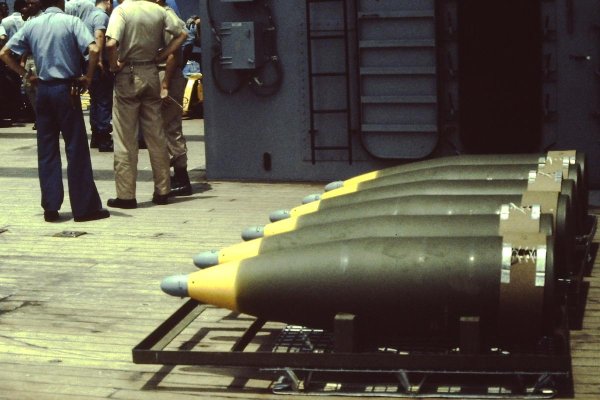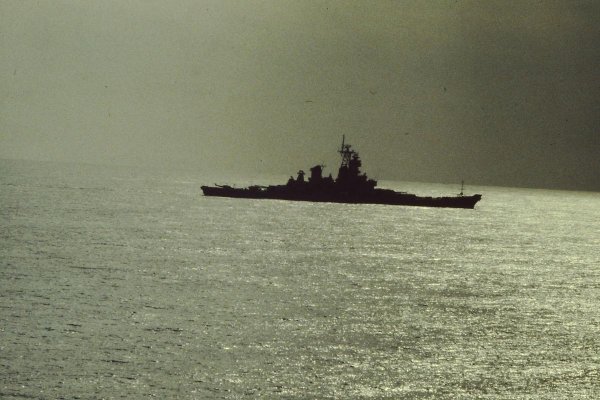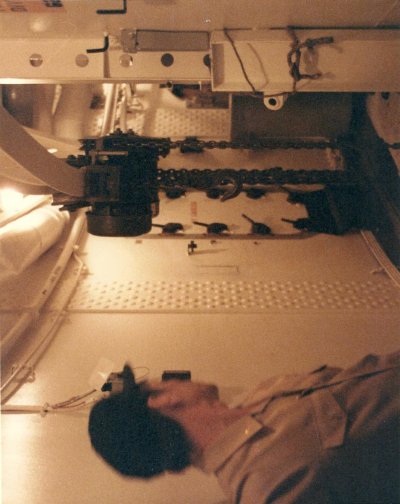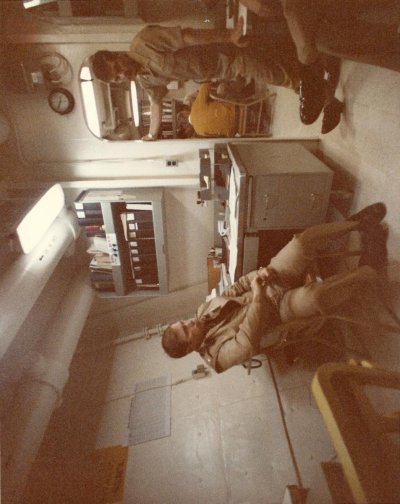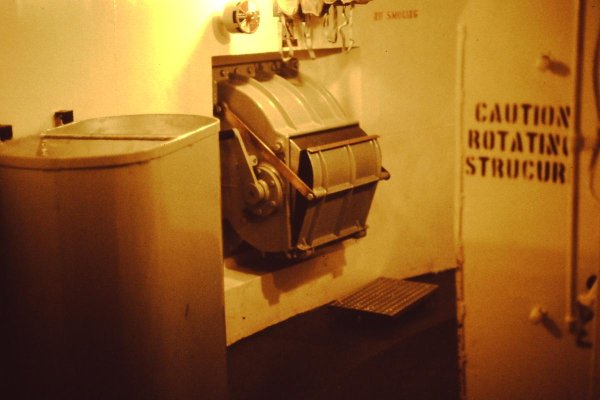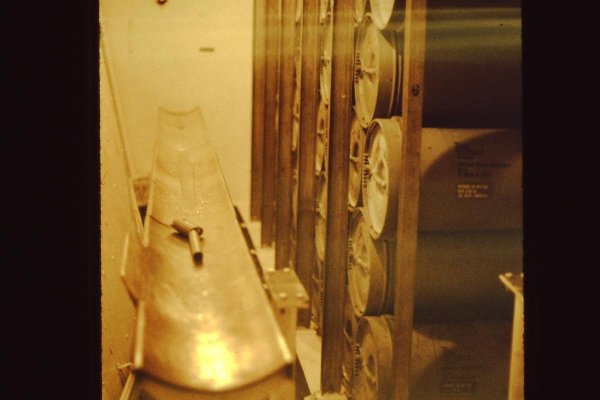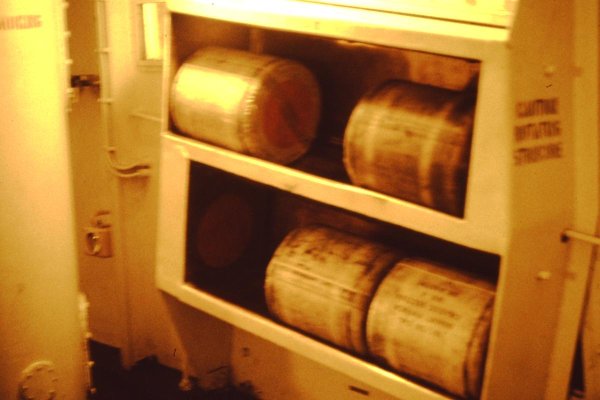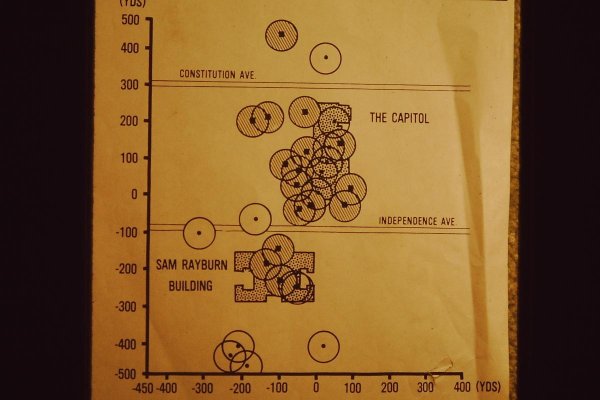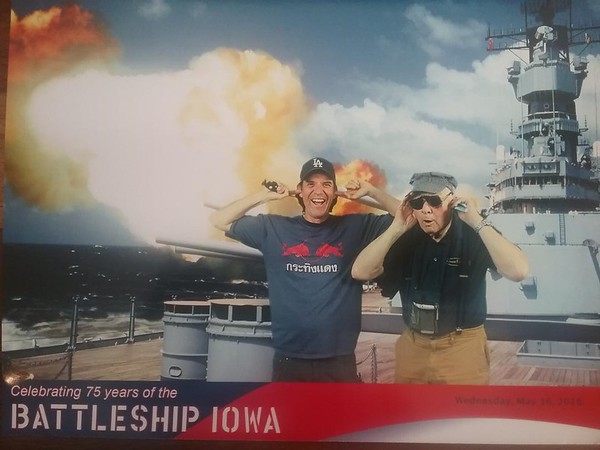Something I said to a NY Times reporter we carried aboard from Norfolk to Brooklyn, NY, the ship's birthplace, about the recent USS New Jersey shoot-up of a Muslim extremist hideout caused him to write that battleships were inaccurate, and so Congress put a hold on the USS Missouri and USS Wisconsin recommissioning funds. I was held blameless because our vaunted Navy PR folks had not warned us about the hostile nature of this t__d, but nonetheless, I had single-handedly scuttled two BBs! Secretary of the Navy Lehman gave me the opportunity to fix this when he started pelting us with questions about what I thought (based upon my comments in the NYT) we needed to conduct an accurate long-range shoot. We had already been partially loaded with more consistently burning re-mixed 16"/45 powder of which I had mentioned Jersey had none. Because explosive 16-inch projectiles were not allowed at our then gun range at Viequez Island at Puerto Rica and because the only dud bullets made for our 16"/50 guns were the 2700-pound armor piercing AND because 16"/45 remix could not be loaded behind the heavy projectiles, we needed some dud projectiles for our lighter (1800-pound) high explosive rounds to shoot and we wanted them weighed to within 20 pounds of each other to reduce dispersion. 90% of our 1200 round loadout was this HE round since there were no enemy BBs in the world. "Done" says SECNAV, and the next thing we know we are ordered to Roosevelt Roads, PR where a large landing craft came out to us with fifty shiny new dud HE rounds along with the commanding officer of Naval Weapons Station, Crane, IN who shepherded them aboard a C-5 transport and down to us after his people had steamed the bursting charges out of them and refilled them with carefully weighed vermiculite. So now it was in our hands as we eased over to the range and began firing at 15-20,000 yards to loosen up a little and get a feel for this new setup. Eventually, after some problems like a failed velocimeter in T2 necessitating spending the night moving projectiles from it to T3 at the aft end of the ship, we ended up at 22 nautical miles from the target and only semi-able to see the observation post (a safety requirement). We were given the target coordinates and lofted the round to 37,000-foot altitude with a hang time of several minutes and awaited our fate to be given us by a spot onto the target. "Up 50 (yards)," came the voice over the radio, and bedlam broke out in gun plot as we all back slapped and whooped it up because had it been an explosive round, the spotter ashore would have probably called target destroyed or neutralized. We had let the C.O. of NWS Crane pull the trigger on that one so we could blame him if we muffed it. SECNAV took my hand-drawn plot of the shots all around the target and superimposed them over the Capitol building and marched over there and got funding restored, and I got a Meritorious Service Medal. Whew, from zero to hero in nothing flat.

